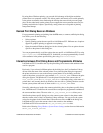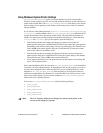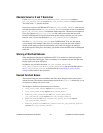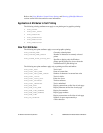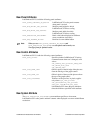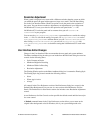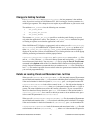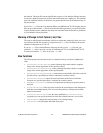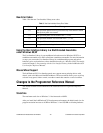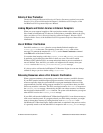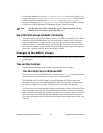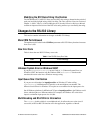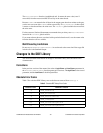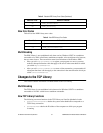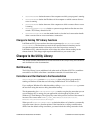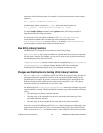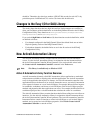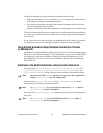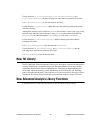
©
National Instruments Corporation 27 LabWindows/CVI Release Notes for Windows
Details of User Protection
The Avoid Unassigned Dynamic Allocation in Function Parameters section is new to the
Details of User Protection discussion in Chapter 1, LabWindows/CVI Compiler, of the
LabWindows/CVI Programmer Reference Manual.
Linking Objects and Static Libraries in External Compilers
When you use an external compiler to link a project that contains object or static library
files created in LabWindows/CVI, there are several points to remember. Refer to the Using
Object and Library Files in External Compilers section in Chapter 3, Windows 95/NT
Compiler/Linker Issues, of the LabWindows/CVI Programmer Reference Manual for more
information.
Use of DllMain: Clarification
Each DLL can have a DllMain function, except that the Borland compiler uses
DllEntryPoint as the name. The operating system calls DllMain with various
messages. To generate the template for
DllMain, use the Insert Constructs command
in the Edit menu of the Source window.
Use caution when inserting code in the
PROCESS_ATTACH and PROCESS_DETACH cases.
In particular, avoid calling into other DLLs in these two cases. The order in which
Windows 95/NT initializes DLLs at startup and unloads them at process termination is
not well defined. Thus, the DLLs you want to call might not be in memory when your
DllMain receives the PROCESS_ATTACH or PROCESS_DETACH message.
It is always safe to call into the LabWindows/CVI Run-time Engine in a run state change
callback as long as you do so before calling
CloseCVIRTE.
Releasing Resources when a DLL Unloads: Clarification
When a program terminates, the operating system releases resources your DLL allocates.
If your DLL remains loaded throughout program execution, it does not need to release
resources explicitly when the system unloads it at program termination. However, if the
program unloads your DLL during program execution, it is a good idea to have your DLL
release any resources it allocates. The DLL can release resources in
DllMain in response to
the
PROCESS_DETACH message. Alternatively, the DLL can release resources in a function
that it registers with the ANSI C
atexit function. The system calls the function you register
when the DLL receives the
PROCESS_DETACH message.
If your DLL calls into the LabWindows/CVI Run-time Engine DLL, it can allocate resources,
such as user interface panels. If a program unloads your DLL during execution, you might
want to release these resources by calling functions such as
DiscardPanel in the
LabWindows/CVI Run-time Engine. On the other hand, as explained in the previous section,
it is generally unsafe to call into other DLLs in response to the
PROCESS_DETACH message.



